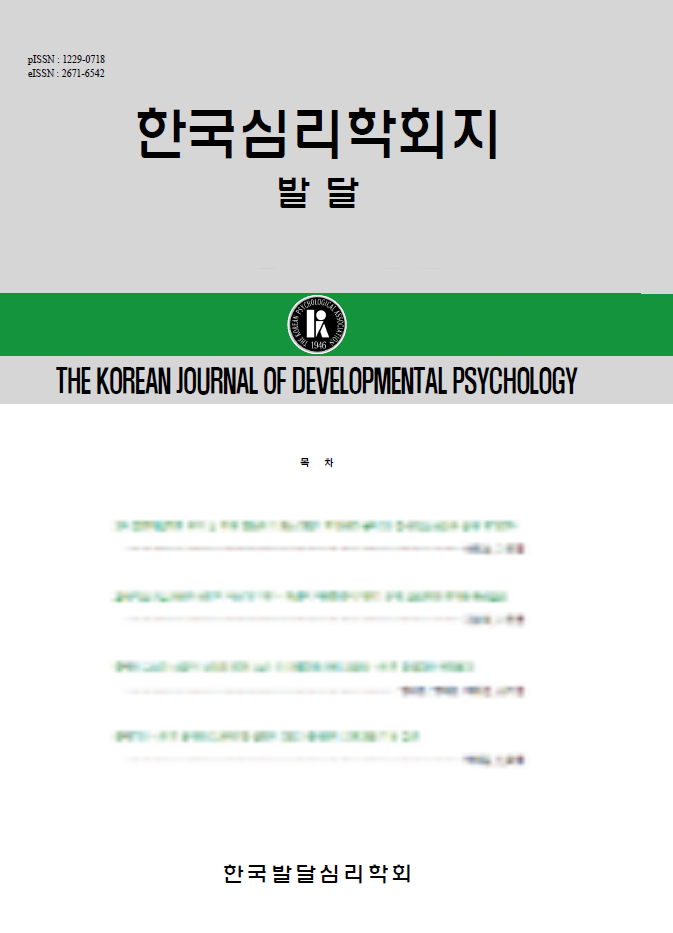open access
메뉴
open access
메뉴 ISSN : 1229-0718
ISSN : 1229-0718

The purpose of this study was to examine the developmental sequence of children's understanding of mixed emotions and to investigate children's understanding of ambivalence. Srudy I replicated Hatter & Buddin(1987)'s study and examined a five-stage developmental sequence of children s understanding of mixed emotion. The developmental levels were defined by combinations of the valence of the two emotions(same valence or different valence) and the number of targets coward which the two emotions were directed(one or two). The following sequence, documented across ages 4 through 12(n=126), emerged: Level 1, no acknowledgement of simultaneous emotions; Level 2, simultaneity of emotions of same valence directed toward one target; Level 3, emotions of same valence, each directed toward a different target; Level 4, emotions of different valence, each directed coward a different target; and Level 5, emotions of different valence diretted coward the same target. The ages of children systematically increased across levels. Additional findings revealed developmental differences in the types of errors, selection of emotion valence, and emotion terms. Study II investigated children's understanding of ambivalence. The purpose of study II was to test the hypothesis that offers a detailed definition of the development of the ability to understand ambivalence. Understanding ambivalence was defined as a complex capacity that includes three components; (a) the recognition that two contradictory feelings can coexist at the same time toward the same person, (b) the awareness that conflicting feelings interact with and modify one another, (c) the ability to coordinate the feelings provoked by the immediate situation and other feelings related to one's internal state, and enduring characteristics of the target. In result, these three components were identified and there was a difference in the second component. Regarding the second component, three groups were found; Group 1 reported that emotions cannot be mixed, but just coexist separately. Group 2 reported that emotions can be mixed, but cannot interact. Group 3 reported that there is dynamic interaction between the conflicting emotions.
